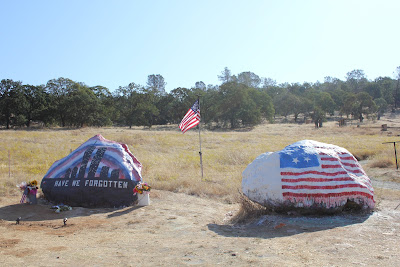 |
| Photo by Nika Megino |
I jumped up and ran over to the fire pole. It took me about a second to slide down the 25 foot drop to the ground floor, much faster than taking the stairs. We all quickly donned our turnout gear and jumped into the truck. I assumed that this was going to be just another false alarm and that we would be back at the station in a few minutes. Those thoughts vanished as dispatch gave us more information.
Engine 50, engine 52, engine 54, truck 51, Truck 110, engine 82, Rescue 54, battalion 11, battalion 13, commercial structure fire. We have multiple callers reporting smoke and flames showing.
 |
| That's me at the tip of the ladder. Photo by Nika Megino. |
As we turned right out of the station we looked toward the address and immediately saw the dark plume of smoke. On the tactical channel my captain gave an update, "All units responding be advised truck 51 has smoke showing from the station."
We knew going into this fire that we would be going defensive right away. The building is an old abandoned Circuit City. Over 20,000 square feet that had been empty for years. In fact, we had used this building for training. We knew that the roof had dozens of holes cut by us. Also we had already had several fires (usually started by squatters) in this building. Enough so that the structural integrity of the building, especially the roof, was in question.
 |
| Engine '50' with two 2 1/2" lines going interior. |
The first in engine arrived on scene and sized up the situation. There was heavy smoke and flames on the Bravo/Charley corner (For firefighters to better be able to describe a building the front is the Alpha side. You then move clockwise around the building so that the left side is the Bravo side, the rear is the Charley side and the right side is the Delta side). They also called for a second alarm giving us two more engines, a truck and another BC. It never hurts to have more manpower.
As we were pulling up Engine 50 announced that the hydrant on the corner that they had tagged was dry. Engine 52 stopped at another hydrant and started laying their LDH so that we would have a water supply. Another engine was direct to the hydrant over the wall from Engine 50. The crew from 50 laddered the wall and handed over their 5" supply line.
 |
| My view of fire attack. |
While the engines worried about their water supplies and hoses we position the truck as close as we could to the burning section of the building. This was difficult because of mounds of dirt and debris all over the old parking lot. We then extended the stabilizers and raised the ladder. Our truck has a pre-plumbed water way so we didn't need to connect any hoses before getting into place. Once the ladder was up I climbed to the top. We then started flowing over 1000 gallons of water a minute onto the fire.
All the crews on the ground (looking to me like ants) were told to not go into the rear of the building while I was flowing water. I was putting more than 4 tons of the wet stuff into the building and onto the roof every minute. We didn't want anyone near that!
 |
| Anyone want to join me? |
One of the crews got a report that a homeless man may have still been inside. They immediately started a search from the front. Once they were in position, with a hose line, we shut down the water tower. I then spent the rest of the operation as the eye in the sky. I was able to direct crews to hot spots and to give the IC information on the progress. I had a very unique view.
After interior efforts were stopped we again turned on the big guns. We soaked everything we could. Engine 50 also helped out with their deck gun because it's set up with the ability to use foam. By the time that we left there was over a foot of foam and water all over the roof and the interior.
 |
| The roof after the fire. |
We then had to pick up the hundreds of feet of hose of varying sizes and reload them. Back at the station we washed the truck down. Four hours after the tones went off I was in the shower cleaning up.
 |
| My view of the supply lines. |
And the homeless man that was reportedly inside? He was found eating a hotdog at the gas station watching everything go down.













